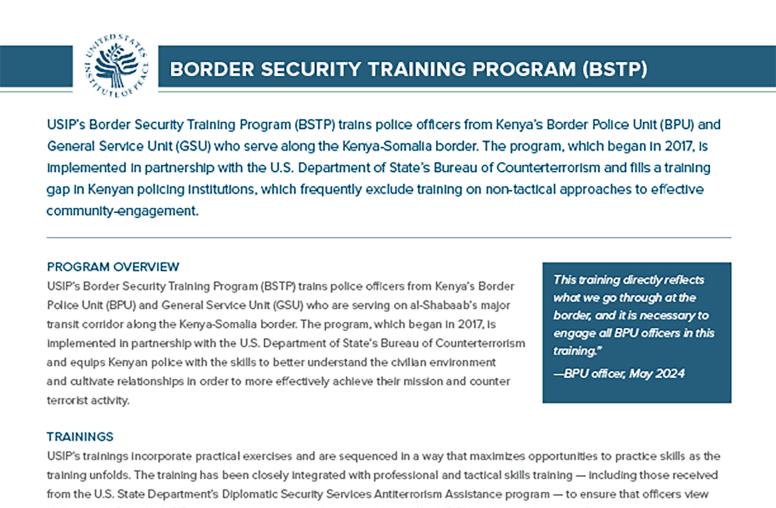Community Resilience to Violent Extremism in Kenya
Focusing on six urban neighborhoods in Kenya, this report explores how key resilience factors have prevented or countered violent extremist activity at the local level. It is based on a one-year, mixed-method study led by the United States Institute of Peace and supported by Sahan Research.
Summary
- Over the years, Kenya has conveyed an idyllic public image of a peaceful society in a region of conflict-ridden states. A much more contested narrative of a violent past exists, however.
- Despite initiatives related to Christian-Muslim conflicts in the 1990s, a new regional security threat emerged, mainly revolving around the activities of al-Shabaab.
- Groups like al-Shabaab understand and use a combination of political realities, socioeconomic factors, and individual characteristics that render many vulnerable to recruitment.
- Qualitative studies show a relationship between heavy-handed counterterrorism operations by security forces and radicalization of Kenya’s Muslim population.
- A paradox has emerged, where emphasis on winning the hearts and minds of target populations has collided with the dominance of hard military and security approaches to countering violent extremism.
- The challenge with a concept like resilience to violence, which is both ambiguous and dynamic, is—for analytical purposes—to identify a concrete and measurable relationship.
- Communities that prevent the emergence of violent conflict, or rebound more quickly after it, have everyday capacities to successfully harness against extremist violence.
- Communities with genuine associations with religious members from different groups experience less violent extremist activity.
- Fluid religious and ethnic identities, which might lead to higher tolerance of and openness to members of other religions and tribal groups, do not explain community resilience to violent extremism.
- Communities facing violent extremist threats need to develop resilience capacities and strategies. Without commensurate capacity and action, threats can overwhelm even highly resilient communities.
- Heavy-handed security approaches not only increase the risk of violent extremist activity, they also undermine community resilience factors and relationships.
About the Report
Focusing on six urban neighborhoods in Kenya, this report explores how key resilience factors have prevented or countered violent extremist activity at the local level. It is based on a one-year, mixed-method study led by the United States Institute of Peace (USIP) and supported by Sahan Research.
About the Author
Lauren Van Metre, PhD, led the Applied Research Center at USIP and currently conducts research and writing on community resilience to violence in Ukraine and Kenya. She directed USIP’s grant programs, working with researchers worldwide to build evidence for successful interventions against electoral and extremist violence.



